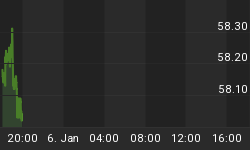Solar Minimum Continues
January's Sunspot count came in at 6.7, which was down from December's 8.2. The following chart includes the latest post and covers Solar Cycle 24.
The high was 145 in February 2014, which compares to the high of 238 in September 2003.
With the decline in solar activity, the number of Spotless days continues to grow. It's the way it works. So far, this year there has been 17 days, or 52% for the year. In all of 2017, the number was 104 days or 28% and the year before it was 32 days or 9%. For 2015 the count was zero, as it essentially was back to 2010.
On the weather front (pun not intended), there has been a brief warming in the El Nino region, which shows in the next chart.

The main thing is that on the longer-term, the El Nino and its warming influence is waning.

Cosmic Stuff
As solar activity diminishes the Earth's magnetic field also diminishes. This lets more cosmic rays through, which prompts more clouds. This not only increases the probability of precipitation. By reflecting more of the sun's energy to outer space it forces cooling.
This influence is beyond weather, it is climate and it is changing. The current part of the decline has yet to bring the average temperatures down. It will.
The chart below shows the steady rise in cosmic radiation as the sun's activity declined. It begins in 2015 and the feature is the decrease in cosmic radiation with a strong, but brief solar outburst. So the concept works on the nearer-term.
The theory about cosmic ray influences is gaining widespread acceptance.

The next chart is from the Danish Met and it shows the brief surge in the mean temperature. The current number is not down to the mean for this week. Thank heaven for small mercies. However, the restoration of the mean is now probable.
Danish Met: Arctic Mean Temp

Source: Ice Age Today
Unusual Weather Reports
From the Northern Hemisphere:
"First Snow in 50 Years Paralyses Southern Morocco" – January 30.
Then from the Southern Hemisphere:
"Summer Blizzard in Tasmania" – January 31.
Wherever it occurs snow needs clouds and cool.
Northern Hemisphere Snow Content

Part of the season was at the high-side of normal. Lately it is in the middle of normal.
This, of course, depends upon cold and precipitation. The following link to the Great Lakes Ice Cover shows a material increase for this season.
Readers are invited to contemplate the establishment's insistence that expanding ice and snow cover is caused by Global Warming.
Have a Happy Groundhog Day.
Great Lakes Ice
Global Temps: Satellite

Source: Dr. Roy Spencer
• Highlights Are the El Ninos of 1998 and 2016

Link to January 26, 2018 Bob Hoye interview on TalkDigitalNetwork.com: https://www.howestreet.com/2018/01/26/equity-markets-have-taken-on-a-life-of-their-own/
Listen to the Bob Hoye Podcast every Friday afternoon at TalkDigitalNetwork.com

















